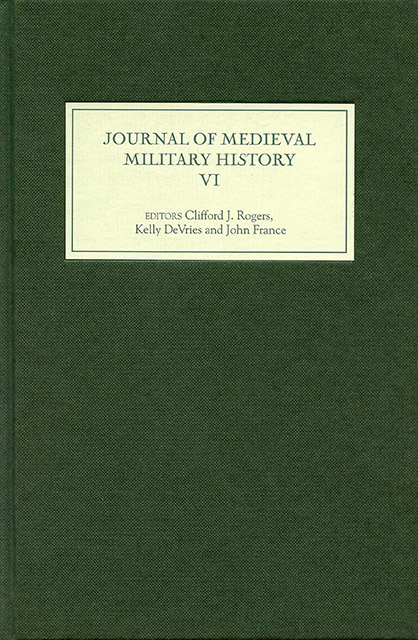Book contents
- Frontmatter
- Contents
- 1 Cultural Representation and the Practice of War in the Middle Ages
- 2 The Brevium Exempla as a Source for Carolingian Warhorses
- 3 Infantry and Cavalry in Lombardy (11th–12th Centuries)
- 4 Unintended Consumption: The Interruption of the Fourth Crusade at Venice and Its Consequences
- 5 Light Cavalry, Heavy Cavalry, Horse Archers, Oh My! What Abstract Definitions Don't Tell Us About 1205 Adrianople
- 6 War Financing in the Late-Medieval Crown of Aragon
- 7 National Reconciliation in France at the end of the Hundred Years War
7 - National Reconciliation in France at the end of the Hundred Years War
Published online by Cambridge University Press: 10 March 2023
- Frontmatter
- Contents
- 1 Cultural Representation and the Practice of War in the Middle Ages
- 2 The Brevium Exempla as a Source for Carolingian Warhorses
- 3 Infantry and Cavalry in Lombardy (11th–12th Centuries)
- 4 Unintended Consumption: The Interruption of the Fourth Crusade at Venice and Its Consequences
- 5 Light Cavalry, Heavy Cavalry, Horse Archers, Oh My! What Abstract Definitions Don't Tell Us About 1205 Adrianople
- 6 War Financing in the Late-Medieval Crown of Aragon
- 7 National Reconciliation in France at the end of the Hundred Years War
Summary
Among the problems most feared by any ruler in the medieval world – and later – was division among his subjects. A divided society, as Christ had proclaimed, could not long survive. Conflict was a threat to peace which every prince hoped to avoid. It was for this reason that steps had long been taken, with mixed success, to ban and prevent private war in the lands over which French kings ruled; over centuries men came to accept that only the ruler might wage war with proper authority. And, as if in conscious search of ways of resolving disputes when these arose (as they inevitably did), the late Middle Ages witnessed the development of legal procedures leading to compromises and negotiated settlements between those who sought to resolve their differences through the law. The responsibilities of rulers to work actively for peace were causing them to take a firm lead and to show by example that society need not, indeed should not, live in conflict, but in harmony and justice.
In the mid-fifteenth century the kingdom of France was emerging from a lengthy period of war against England whose kings had pretensions to the crown of France. Since the 1340s, in their attempts to translate claims into reality, the English had invaded the country several times. Most recently, under their kings, Henry V (1413–1422) and his son, Henry VI (1422–1461), they had conquered and occupied Normandy and much of northern France. The years of war and occupation had ended in 1450 when Charles VII (1422–1461) had finally regained control of the duchy through military force.
Nonetheless, in the early fifteenth century, the serious failings of the monarchy had allowed, even encouraged, civil war between the followers of the dukes of Burgundy on the one hand and those who favored the duke of Orléans and the count of Armagnac on the other (hence the names “Burgundians” and “Armagnacs” given to those who supported the rival groups).
- Type
- Chapter
- Information
- Journal of Medieval Military HistoryVolume VI, pp. 149 - 164Publisher: Boydell & BrewerPrint publication year: 2008



